When it comes to surviving in the wild, animals can become master tricksters. They’ve learned to lie, cheat, and deceive in ways that might surprise you. These survival tactics are not just fascinating but also vital for their existence. Think of them as nature’s clever little hacks. Let’s dive into the many ways animals “lie” their way through life.
1. The Deceptive Cloak Of The Cuttlefish
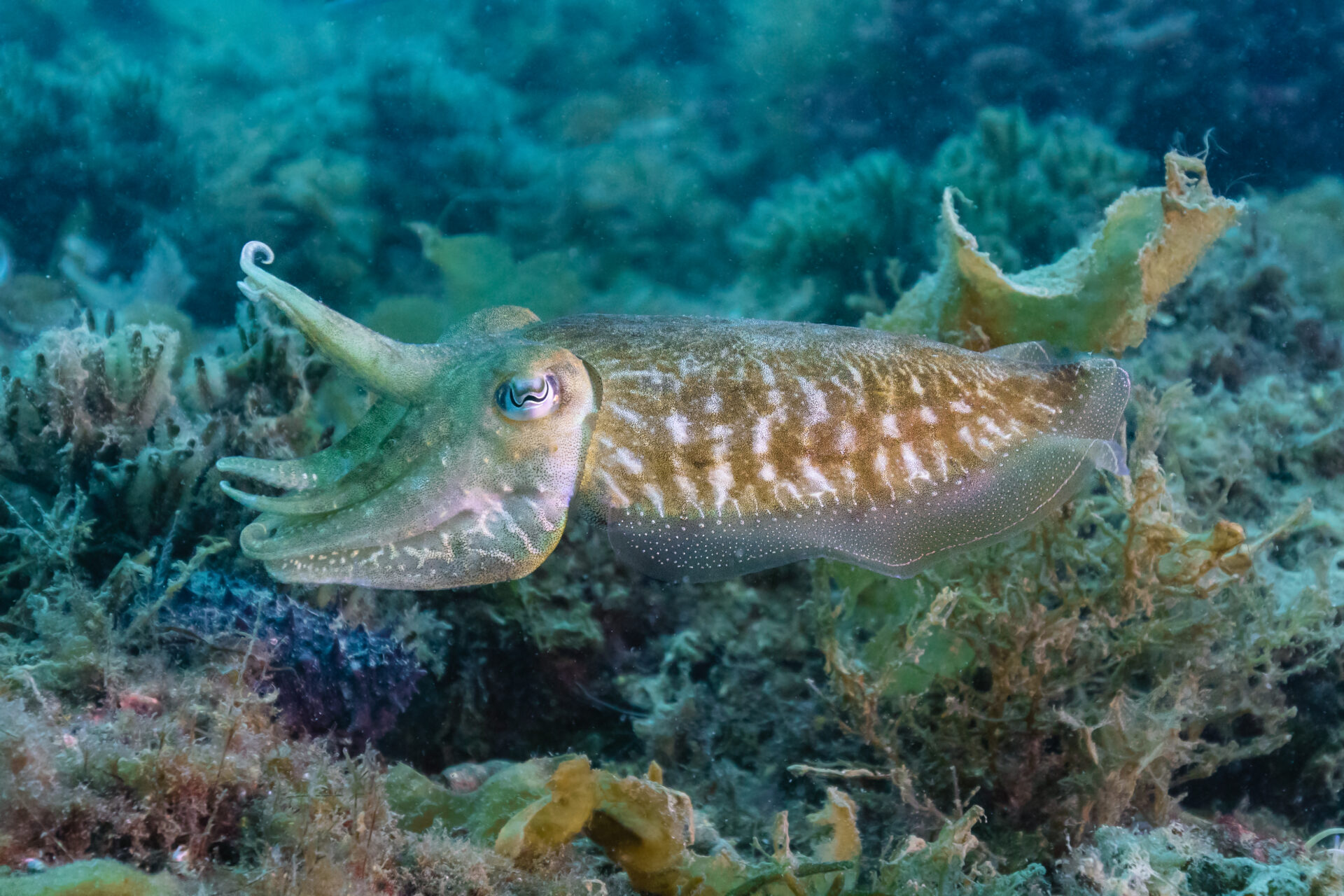
Cuttlefish are experts at camouflage, mastering the art of blending into their environment to avoid predators. They can change their skin color and texture in an instant, making them nearly invisible to the untrained eye. This ability is so advanced that even researchers, like Dr. Roger Hanlon from the Marine Biological Laboratory, have been amazed by their skills. Their deception doesn’t stop at camouflage; cuttlefish have been known to mimic other sea creatures to confuse potential threats. It’s a testament to how adaptive and resourceful these creatures are when it comes to survival.
In addition to their visual tricks, cuttlefish can also communicate through color changes. They use this ability to send signals to each other, which can be crucial during mating season. This dual-purpose use of their skin makes them not just invisible but also communicative, a rare combination in the animal kingdom. It’s like having a built-in messaging system that doubles as a defense mechanism. Cuttlefish truly know how to lie with style.
2. The Sneaky Mimicry Of The Scarlet Kingsnake
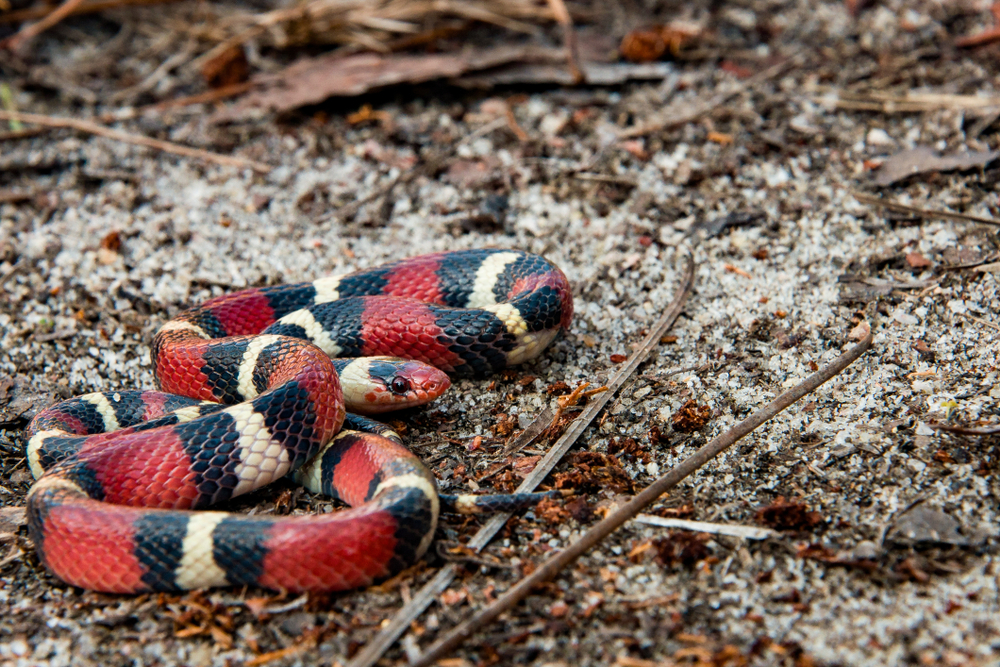
The scarlet kingsnake employs mimicry to fool predators into thinking it’s something dangerous. By mimicking the coloration of the venomous coral snake, it deters predators who can’t differentiate between the two. This is a classic case of Batesian mimicry, where a harmless species evolves to imitate the warning signals of a harmful one. The scarlet kingsnake’s mimicry is so convincing that it can even fool humans who are not familiar with these reptiles. This tactic is simple yet effective, allowing the kingsnake to navigate its habitat with a lower risk of being eaten.
Mimicry serves as a crucial survival strategy, especially in environments where predators are abundant. The kingsnake’s ability to imitate a venomous counterpart gives it a significant advantage in the wild. It doesn’t have to waste energy on elaborate defenses or venom production. Instead, its mere appearance is enough to keep it safe. This shows you how important appearances can be, even in the animal world.
3. The False Eyes Of The Peacock Butterfly
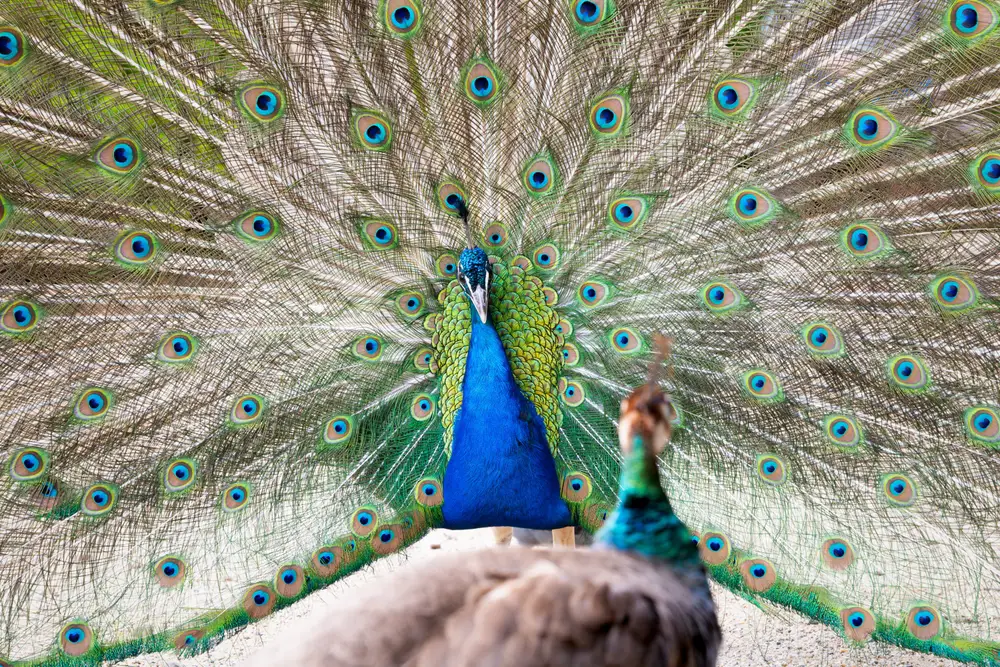
Peacock butterflies have an ingenious way to scare off predators with a set of false eyes on their wings. When threatened, they display these eyespots, which can imitate the eyes of a larger animal. According to a study by Professor Tom Sherratt at Carleton University, these eyespots can startle and confuse predators like birds. The predators, momentarily thrown off, might hesitate just long enough for the butterfly to escape. This simple yet effective deception is a lifesaver for these delicate creatures.
The bright, eye-catching patterns are not always visible; they’re tucked away until needed. This selective display ensures that the butterfly remains inconspicuous most of the time, revealing its “lie” only when necessary. It’s a clever use of resources and a great example of how animals maximize their survival tools. By keeping these patterns hidden, the peacock butterfly avoids drawing unwanted attention when there’s no immediate threat. It’s a strategic balancing act between being invisible and being intimidating.
4. The Clever Bluff Of The Hognose Snake
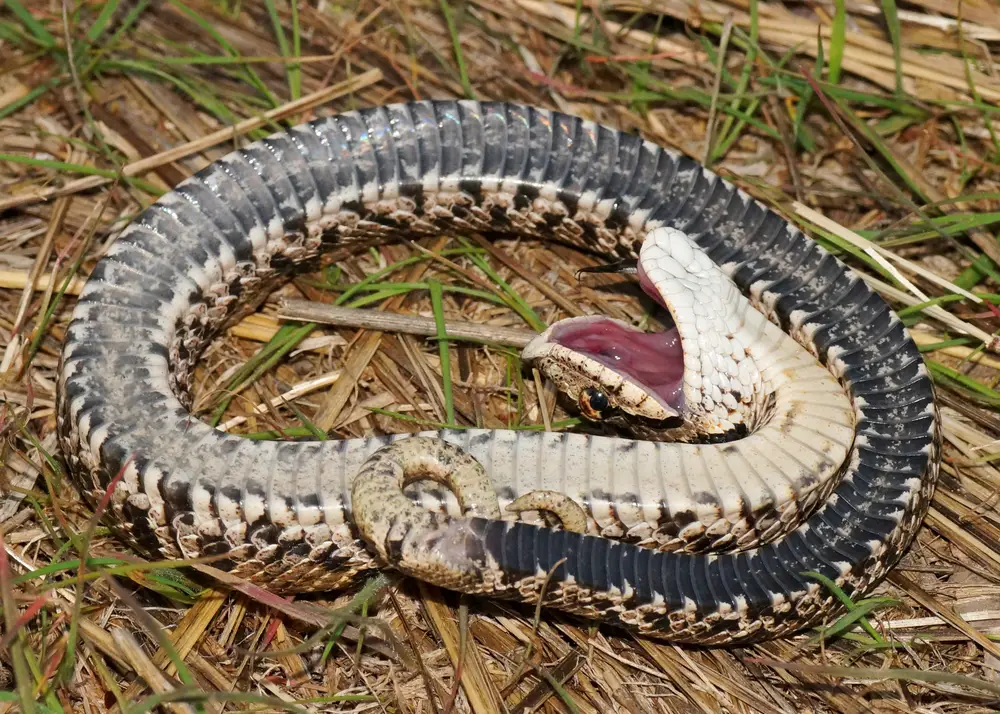
The hognose snake might win an Oscar if it were up for acting awards, thanks to its dramatic defensive behaviors. When threatened, it flattens its neck and hisses loudly, mimicking the dangerous cobra. If that doesn’t work, it ups the drama by playing dead. This over-the-top performance includes flipping onto its back, opening its mouth, and even letting its tongue hang out. All this theatricality is designed to deter predators by creating confusion or disgust.
Playing dead is more than just a last resort; it’s a strategic decision. By feigning death, the hognose snake makes itself seem like an unappetizing meal. Predators often seek out live prey, so this lifeless act can be quite effective. It’s like the snake is saying, “I’m not worth your time or energy.” This method of deception shows the lengths to which animals will go to protect themselves.
5. The Illusion Of The Mockingbird’s Song

Mockingbirds are the ultimate musical impersonators, mimicking the songs of other bird species with incredible accuracy. This vocal mimicry can confuse rival males and deter them from entering the mockingbird’s territory. A study by Dr. David Gammon at Elon University found that these birds can mimic dozens of species, making their repertoire quite impressive. It’s not just about the song for them; it’s a clever way to maintain control over their space. By creating an auditory illusion, they manage to keep potential competitors at bay.
This vocal prowess isn’t just for show; it’s a critical survival tool. The ability to mimic sounds helps mockingbirds protect their nests without the need for physical confrontation. It’s a non-violent way to assert dominance and ensure their offspring are safe. Beyond that, their mimicry can also attract mates, as a bird with a wide variety of songs is seen as more attractive. It’s fascinating to see how vital sound can be, not just for communication but also for deception.
6. The Decoy Ducklings Of The Killdeer
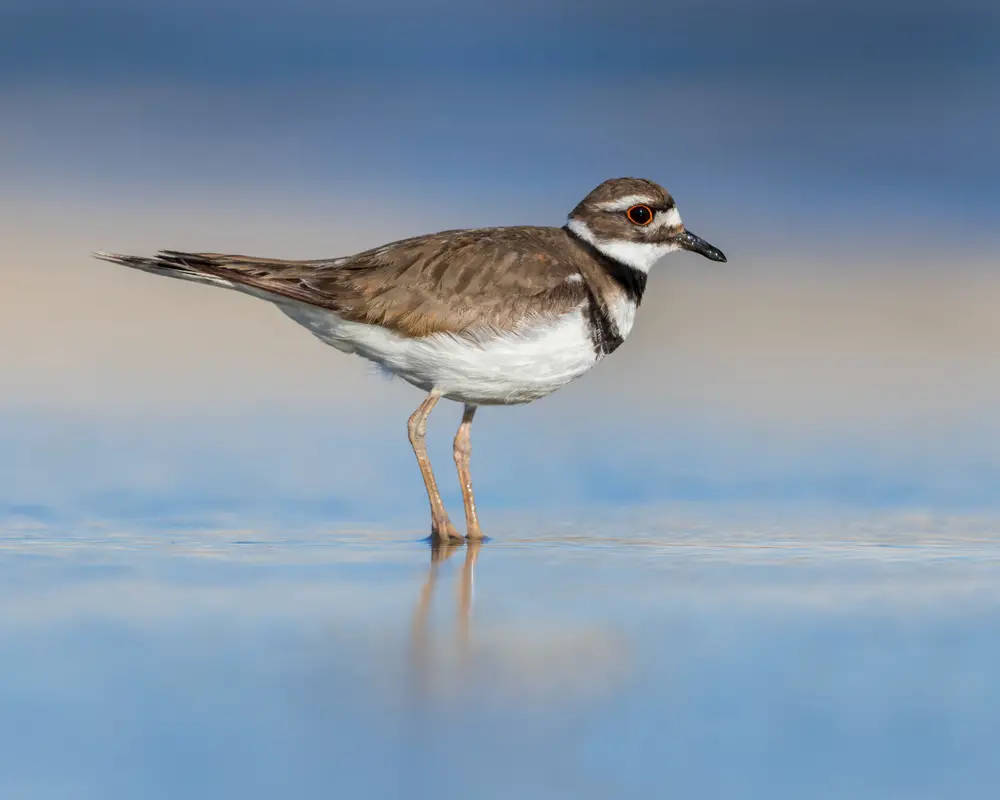
Killdeer have a clever tactic to protect their young, which involves a bit of trickery. When a predator gets too close to their nest, the adult killdeer will perform a “broken-wing” act. This performance aims to lure the predator away by pretending to be an easy meal. The bird flaps around on the ground, seemingly injured, to capture the predator’s attention. Once the predator is far enough from the nest, the killdeer suddenly “recovers” and flies off.
This deception serves as a distraction, allowing the vulnerable chicks to remain hidden and safe. It’s a risky move for the adult bird, but one that often pays off. By putting itself in apparent danger, it shifts the focus away from the nest. It’s a testament to the lengths parents will go to protect their young. In this case, a little deception goes a long way in ensuring the survival of the next generation.
7. The Camouflage Of The Leaf-Tailed Gecko
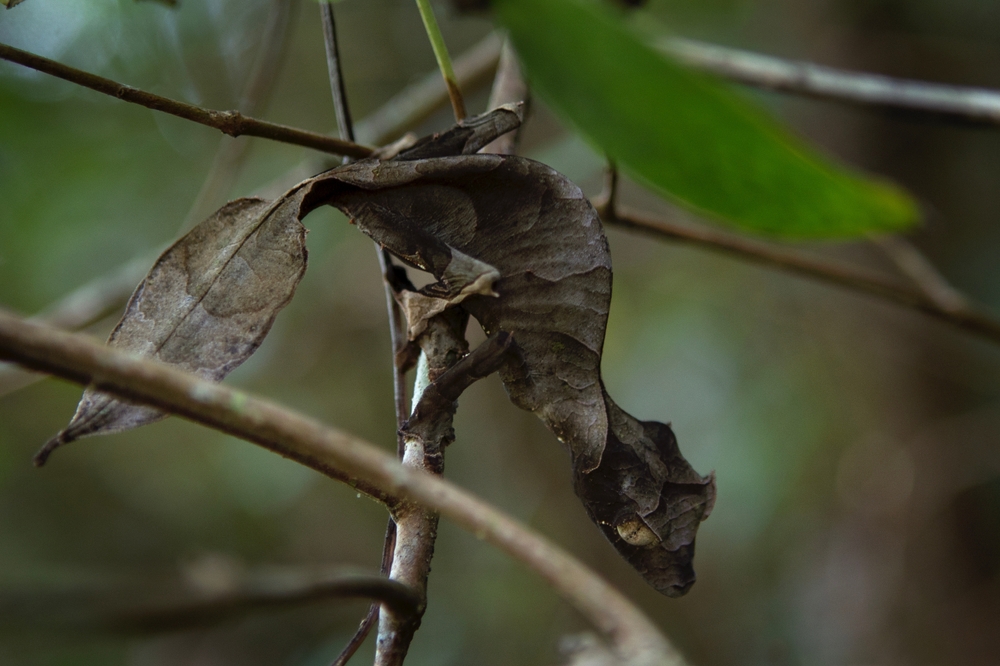
Leaf-tailed geckos are masters of disguise, making them hard to spot in their natural habitat. Their bodies are shaped and colored to resemble leaves, complete with intricate patterns and edges. According to herpetologist Dr. Aaron Bauer, these lizards often hang from branches or perch on leaves, blending seamlessly into their surroundings. This camouflage provides them with protection from predators and increases their chances of catching prey. It’s a brilliant adaptation that highlights how evolution can shape an animal’s appearance for survival.
Their ability to blend in isn’t just limited to visual deception; these geckos also remain perfectly still to avoid detection. By minimizing movement, they enhance their camouflage and avoid drawing attention. This stillness is a critical component of their survival strategy. It demonstrates how physical adaptations and behavior work hand-in-hand in the animal kingdom. Remaining unseen is their best line of defense, proving that sometimes, the best way to hide is in plain sight.
8. The Bait-And-Switch Of The Anglerfish
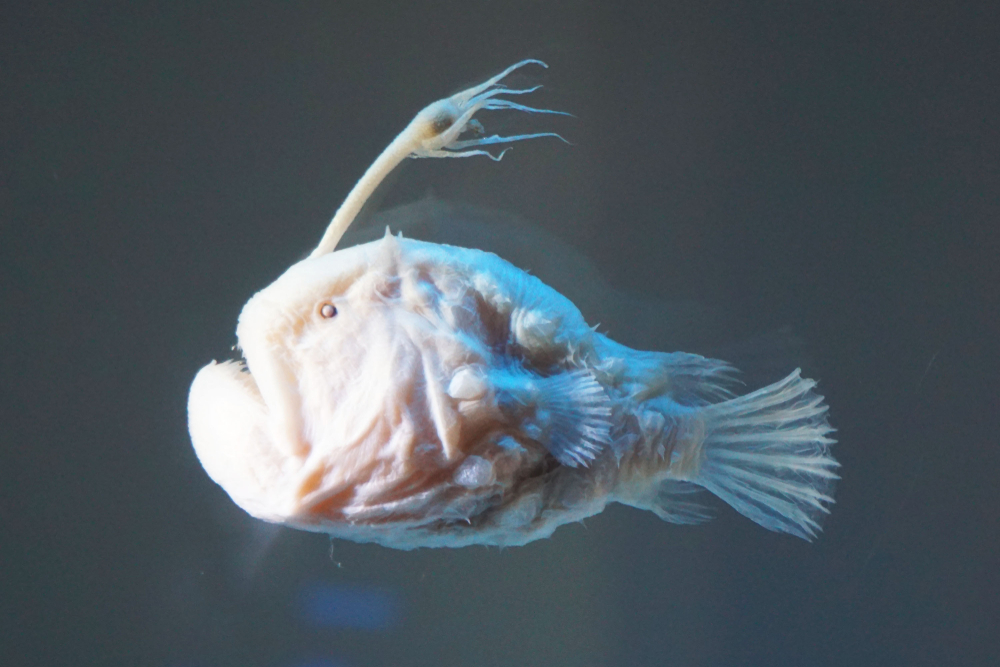
Anglerfish are deep-sea predators that use a unique form of deception to catch their prey. They have a bioluminescent lure that dangles in front of their mouth, resembling a small, glowing fish. Unsuspecting prey are attracted to this light in the dark ocean depths, mistaking it for a meal. As they approach, the anglerfish snaps them up with its large, powerful jaws. This bait-and-switch tactic is a perfect example of using deception to hunt effectively.
The anglerfish’s lure is a modified fin spine that contains glowing bacteria, which it can wiggle to mimic the movements of a living creature. This adaptation is crucial for survival in the pitch-black environment of the deep sea. Without light, hunting relies heavily on trickery and stealth. The anglerfish’s ability to deceive its prey ensures it can feed in an environment where food is scarce. It’s a survival strategy that’s as eerie as it is effective.
9. The Bluffing Dance Of The Blue-Footed Booby
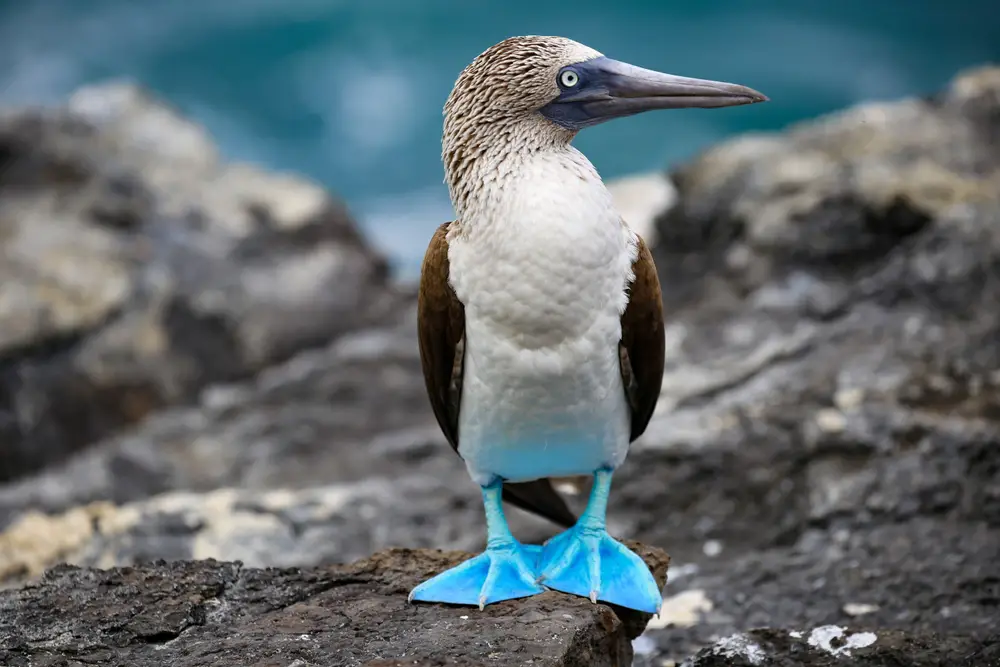
The blue-footed booby uses a bit of deception in its courtship rituals. Males perform an elaborate dance, showing off their bright blue feet to attract a mate. The bluer their feet, the more attractive they are, indicating good health and genetic fitness. During this dance, they also perform exaggerated movements to make themselves look more appealing. This display isn’t just about physical prowess; it’s a way of tricking potential mates into seeing them as the best option.
This form of deception is all about appearances, relying on visual signals to convey information. It highlights how crucial such displays are in the bird world, where visual cues often determine mating success. The blue-footed booby’s dance is a reminder that sometimes, love is about putting your best foot forward—literally. This courtship strategy also ensures that only the fittest get to pass on their genes. It’s a dance of deception with high stakes and evolutionary significance.
10. The Pretend Predator Of The Pufferfish
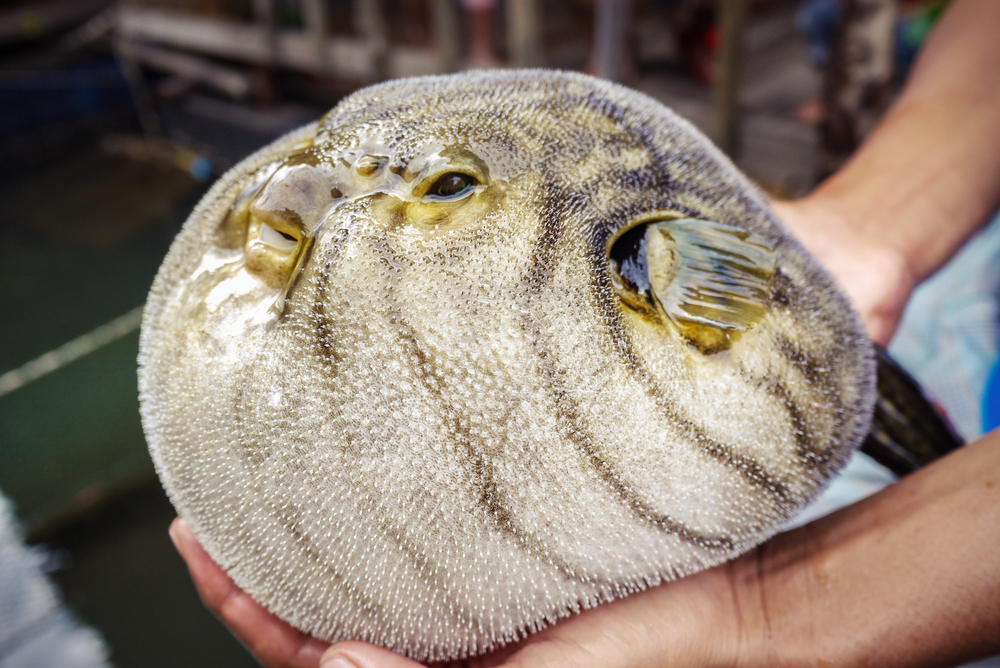
Pufferfish have a unique way of dealing with predators by transforming their bodies. When threatened, they puff up to several times their normal size, displaying sharp spines in the process. This sudden transformation makes them look more intimidating, deterring most predators from attacking. By essentially becoming a spiky ball, they create the illusion of being a more dangerous creature. This defense mechanism is both a bluff and a physical transformation, making it a multifaceted form of deception.
This ability to puff up not only serves as a deterrent but can also dislodge them from tight spaces. It’s a versatile trick that can help them escape tricky situations. The pufferfish’s transformation is a clear example of how physical changes can be used strategically in the animal kingdom. It’s a simple yet effective way to avoid becoming someone else’s meal. The pufferfish’s tactics remind us that sometimes the best defense is making yourself look like more trouble than you’re worth.
11. The False Attack Of The Frilled Lizard
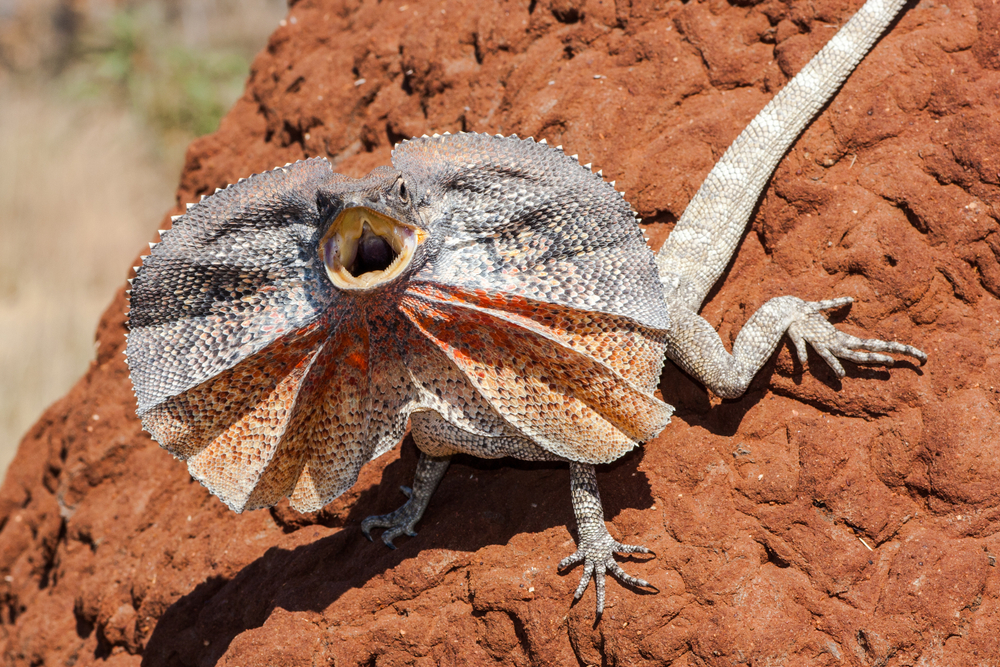
Frilled lizards have a dramatic way of warding off threats that might make you do a double-take. When scared, they flare out a large frill around their neck and open their mouths wide. This sudden display makes them appear much larger and more threatening than they actually are. It’s a classic case of bluffing, where the lizard’s bark is worse than its bite. By pretending to be more formidable, they can often scare off would-be attackers without a fight.
This frill is not just for show; it’s an effective deterrent. By making a rapid transformation, the frilled lizard creates confusion and hesitation in predators. This moment of doubt can be all it needs to escape to safety. It’s a reminder that sometimes, confidence and a good bluff can go a long way. The frilled lizard’s tactics show that in the wild, appearances can indeed be deceiving.
12. The Camouflaged Ambush Of The Orchid Mantis
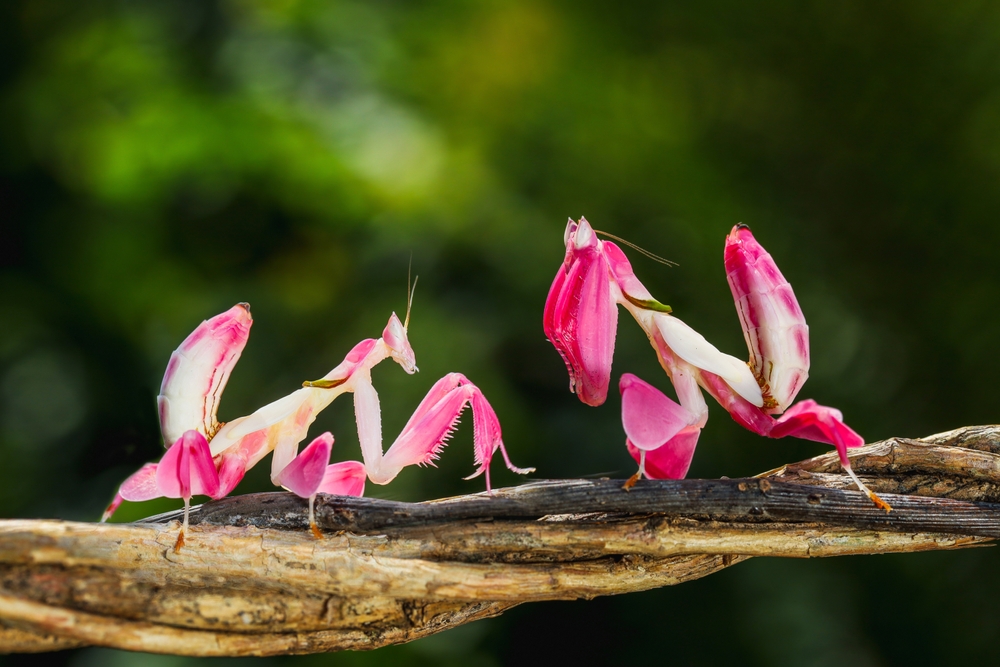
The orchid mantis takes camouflage to an artistic level by mimicking the appearance of a flower. With its petal-like limbs and vibrant colors, it blends seamlessly into floral environments. This disguise allows it to ambush unsuspecting prey that come to pollinate, turning the tables on them. The orchid mantis’s appearance is so convincing that even humans can mistake it for real flowers at a glance. This deception is not just about hiding but about actively luring in its next meal.
This form of mimicry is a prime example of how some predators rely on stealth and surprise. By blending in with its surroundings, the mantis can catch prey with minimal effort. It’s a low-energy, high-reward strategy that maximizes its chances of a successful hunt. This camouflage is a testament to the power of adaptation in the natural world. It’s a case where looking like a flower can make you a formidable predator.
13. The Startling Scream Of The Aye-Aye
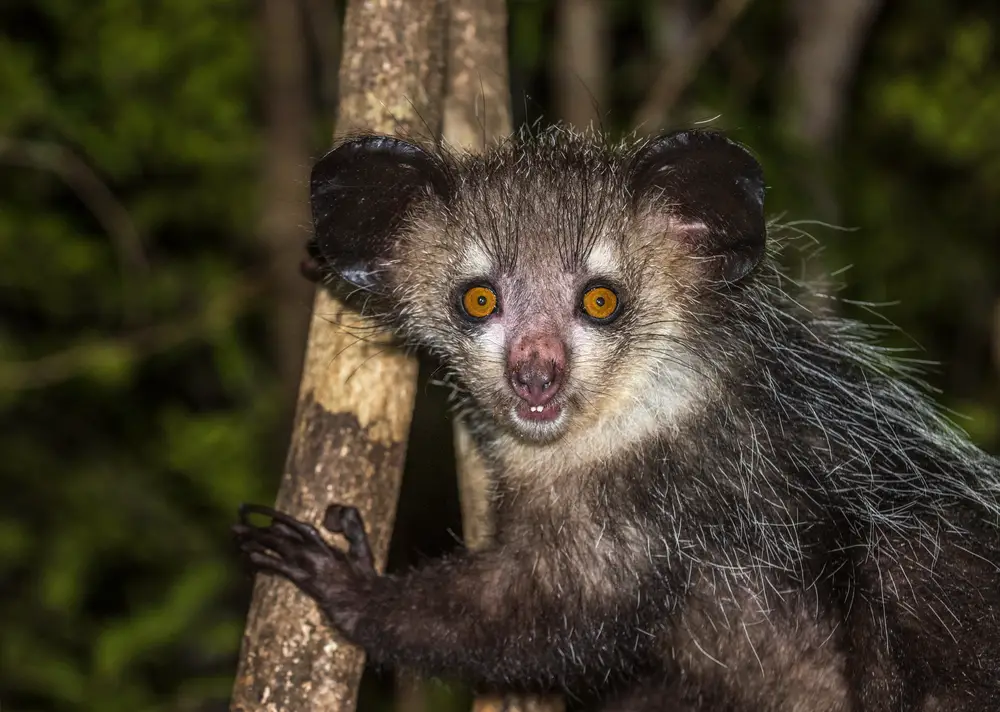
The aye-aye might not be the most visually deceptive animal, but its vocalizations are pure trickery. When threatened, this nocturnal primate emits a high-pitched scream to startle predators. This unexpected sound can confuse and deter attackers, giving the aye-aye a chance to escape. It’s a form of auditory deception that relies on the element of surprise. By catching predators off guard, the aye-aye increases its survival odds in its dense forest habitat.
This scream is an example of how sound can play a role in animal deception. In environments where visibility is low, such as at night, auditory signals become crucial. The aye-aye’s scream is a simple yet effective way to buy time and make a quick getaway. It’s a stark reminder that sometimes, the best way to survive is to make a noise that no one saw coming. Even in the animal kingdom, being loud can be a strategic advantage.
14. The False Signals Of The Firefly

Fireflies might seem like nature’s gentle night lights, but some species use their glow for deceit. Females of certain firefly species mimic the light patterns of other species to attract unsuspecting males. When these males approach, hoping for a mate, they instead become a meal for the cunning female. This deadly deception is known as aggressive mimicry, where the signal is used to lure prey rather than a mate. It’s a dark twist on the typical courtship ritual, showing how deception can take many forms.
This mimicry highlights the complex communication systems in the insect world. The ability to mimic another species’ signals requires precision and timing, underscoring the sophistication of this survival tactic. The firefly’s deceptive glow serves as a warning: not everything that glitters is gold. It’s a reminder of the harsh realities of nature, where even the most beautiful displays can have a deadly purpose. The firefly’s glow, therefore, is a beacon of both wonder and caution in the natural world.
